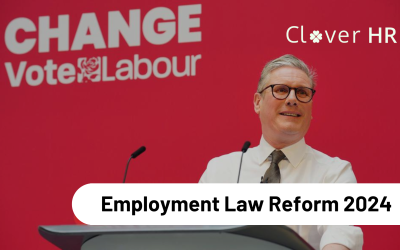What is Dismissal?
Dismissal is the termination of employment by an employer against the will of the employee. Any dismissal that occurs must be shown to have followed a fair procedure.
When to dismiss an employee?
Dismissal is normally deemed fair only if you can show that it is for one of the following reasons:
- A reason related to the employee’s conduct;
- A reason related to the employee’s capability or qualifications for the job;
- Because the employee was redundant;
- Because a statutory duty or restriction prohibited the employment being continued;
- Some other substantial reason of a kind which justifies the dismissal and that you acted reasonably in treating that reason as sufficient for dismissal.
Employers wishing to dismiss an employee must ensure that they have followed a fair procedure. The ACAS code of practice is the minimum procedure that companies must follow in any disciplinary or grievance case.
The ACAS code is not the law and companies can have some differences to this procedure to suit their company, however, the code is the minimum steps that must be followed. If a dismissal case reaches an employment tribunal judges will look to check the ACAS code has been followed in a fair manner.
The ACAS code applies specifically for employees with employment status, but it is good practice for this to be applied to all employees and workers.
ACAS Code of Practice
Options
The ACAS code of practice is designed to help employers and representatives deal with any disciplinary and grievance issues in the workplace.
Disciplinary issues include misconduct or poor performance, although poor performance can also be managed under a separate capability procedure if a company has one.
Grievances are problems, complaints or concerns that employees raise with their employers.
The code does not apply to rules for redundancy dismissals or non-renewal of fixed term contracts.
Fair Process
Fairness is promoted by using rules and procedures for handling all disciplinary and grievance cases. These should be in writing and be specific and clear for all to use. Where appropriate employee representatives should be involved in the development of company rules and procedures. All rules and procedures should be communicated to all employees as it is important that they understand what they are, where they can be found and how they will be used.
Carrying out an investigation
Where a disciplinary or grievance process is being followed it is vital that this is dealt with fairly. This includes:
- Raising and dealing with issues in a prompt and timely manner;
- Employers and employees should both act consistently;
- Employers must carry out necessary investigations to establish the full facts of the case. In some cases, this will require holding investigation meetings with the employee(s) before any disciplinary hearing takes place and in other cases the investigation stage is the collation of evidence that will be used by the employer at a disciplinary hearing. In misconduct cases if possible, different people should conduct the investigation and disciplinary hearing. Any investigation meeting should not by itself result in a disciplinary hearing and disciplinary action;
- There is no statutory right for an employee to be accompanied at investigation hearings, although it is good practice to allow this in company procedures;
- Suspension of an employee(s) is sometimes needed, this is normal when gross misconduct has occurred or where the alleged employees could interfere with the investigation if they remain on site. A suspension should be without prejudice and with full pay. The length of the suspension should be for as brief as possible and should also be constantly reviewed. All suspensions should be confirmed in writing, providing the employee with contact details for a designated person they can contact at the company while they are suspended, details of the alleged misconduct and it should make clear the suspension is not considered a form of disciplinary action.
Disciplinary Action
If an issue has tried to be resolved informally but hasn’t worked and/or an issue requires the disciplinary procedure to be followed, then the employee must be informed of this. This needs to be done in writing and include the following:
- Detailed information about the alleged misconduct or poor performance including any evidence, which may include witness statements and/or any reference to previous conversations or meetings held during the informal process;
- Possible consequences of the outcome, e.g. written warning, demotion etc;
- Time and venue of where the hearing is to be held and who will be conducting the hearing;
- Time for the employee to prepare for the disciplinary hearing;
- The right for the employee to be accompanied at the disciplinary hearing, this can be a member of a trade union or a colleague. This is a statutory right for an employee where the hearing could result in formal disciplinary action being taken against the employee.
At a hearing the employer needs to explain the complaint or issue against the employee and go through the evidence that has been collated. The employee should be given time to set out their case and to answer any allegations made. They also should be given time to ask questions, present their evidence or call any relevant witnesses. Where an employee wishes to call any witnesses they need to give advance notice of this to the employer.
Deciding on the disciplinary outcome
After the disciplinary hearing a decision needs to be made whether or not disciplinary action is justified and this needs to be informed to the employee in writing. Usually where misconduct is confirmed or an employee is under performing this action would be a written warning. Any further act of misconduct or failure to improve performance within an agreed period of time would usually then result in a final written warning. However, if an employee’s first misconduct or poor performance is sufficiently serious then it can be appropriate to move directly to a final written warning.
The confirmation needs to address the nature of the misconduct or poor performance and the improvements, requirements and timescales that are needed. The employee must be notified of how long the warning is valid for and must be told of the consequences if any further misconduct or targets set are not met within the timescales. e.g could lead to a final written warning or dismissal, demotion or loss of seniority etc.
Any decision to dismiss must be made by a manager who has the authority to do so within company procedure. An employee should be informed of any dismissal as soon as possible in writing along with the reasons for dismissal, date of the dismissal, the period of notice and any monies owed. The letter should provide the employee with the right to appeal the decision and the name of who the appeal should go to.
Right to Appeal
Employees have the right to appeal any disciplinary action taken against them if they feel it is wrong or unjust.
An appeal must be made in writing providing reasons and evidence for the appeal.
Appeal hearings should be heard at the earliest opportunity and at an agreed time and place.
The appeal should be dealt with by an impartial manager where possible who has not been involved in the case previously.
Employees must be informed in writing of the results of an appeal hearing as soon as possible.
Dismissal without Warning/ Summary Dismissal
This is when you dismiss an employee instantly without any notice or pay in lieu of notice. Summary dismissal normally occurs when and employee has committed gross misconduct, for example fraud, theft or an act of violence. In these cases, the full fair procedure still needs to be followed as outlined above, and a disciplinary hearing held. If the decision at the end of the hearing is to dismiss the employee, then this can be done without any notice or giving pay in lieu of notice. Employers must ensure when inviting an employee to a disciplinary hearing that could result in dismissal especially when an act of gross misconduct has been committed, that they ensure they inform the employee in the invite letter that an outcome could be summary dismissal.
Dismissal during the probation period
Dismissal of an employee during their probation period normally occurs when the employee does not have the skills or knowledge required for the position, however it can also be for poor time keeping, too many absences or gross misconduct. Employees are entitled to the statutory notice period of one week if they have been employed for one month or more (up to 2 years’ service). There is no statutory right to notice pay if employed for less than 1 month however it is good practice to still give the one week’s statutory notice pay. Usually within probation periods managers hold one to ones with employees to discuss how both parties feel the employment is going, during these meetings any issues regarding employee’s performance or conduct should be addressed. If after discussions the concerns have not improved, then an employee can be released from the company. The formal process above does not need to be followed as long as discussions have been had with the employee. In certain cases, a manager may wish to extend the probation period for the employee by another few months to allow the employee time to improve, if the manager deems this reasonable.
Without a contract
If an employee does not have an employment contract the full fair procedure still needs to be followed as outlined above, unless they are in their probationary period and a disciplinary hearing held. If they are dismissed the statutory notice period should be applied, this is 1 weeks’ notice for up to 2 years’ service and then 1 week per full years’ service up to a maximum of 12 weeks. Please note employees are legally entitled to have a contract on or before their first day at work.
With less than 2 years’ service
Employees need to have 2 years’ continuous service to be able to claim unfair dismissal, which gives employers slightly more flexibility when managing and dismissing employees with less than 2 years’ service. Statutory notice periods must be applied and it is also best practice to follow the stages of dismissal as outlined above to ensure that fairness and consistency are adhered to.
Long term sick leave
An employee is classed as long term sick if they have been absent from work for 4 weeks or more, these four weeks are usually continuous. An employee who is on long term sick can be dismissed from the company, this is usually on the grounds of capability as they are not fulfilling their contract of employment. In these cases, the full fair procedure still needs to be followed. Companies usually have an Absence Management Procedure that must be complied with regarding long term sickness which would include the involvement of Occupational Health, if not it would need to be dealt with under the company Disciplinary Procedure and capability.
Poor performance
An employee who constantly under performs in their role can be fairly dismissed by their employer on the grounds of capability, this needs to be done fairly and follow a fair and reasonable procedure. The employee needs to be given full reasons and evidence or why they are not performing and given the option to improve. This includes putting them on a performance development plan where they have specific targets to meet. If they fail to meet these targets, then they can be processed through the disciplinary procedure which can lead to dismissal. In order to dismiss someone for poor performance an employer must be able to prove that they gave the employee the reasons they were not performing and provided any coaching or training required to assist them.
How can we help?
We can help by reviewing existing disciplinary and grievance procedures for you to ensure that it complies with the minimum guidelines or write a disciplinary and grievance procedure for you, to suit the needs of your business, if you do not have one already in place. We can also provide any training and coaching on the procedures for managers including training on how to conduct investigations, disciplinary and grievance hearings, professional assistance during any stage of a disciplinary issue or potential disciplinary issue and scripts or letter templates if required.
Please contact Clover HR on 0121 516 0299 or email us at info@cloverhr.co.uk
Copyright Clover HR


